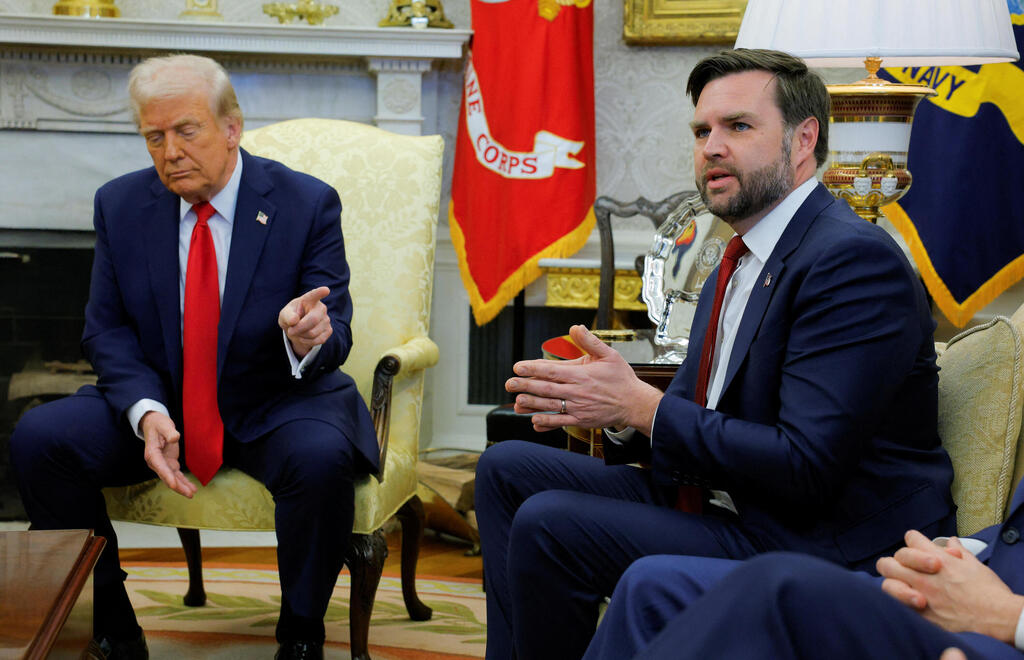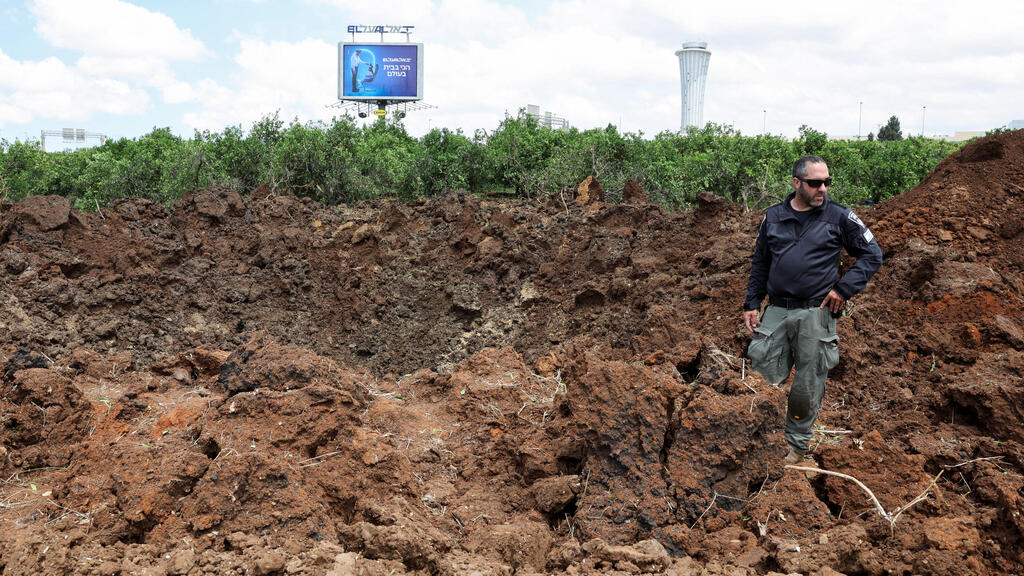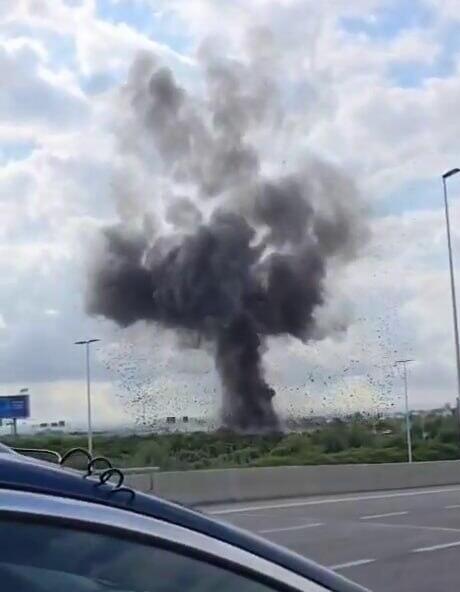The Yemeni ballistic missile that blasted a crater near the tarmac of Israel’s main international airport delivered a symbolic victory to the Houthis—but experts caution that the event must be viewed in proportion. This marked the third time in which Israel’s air defense systems, even when reinforced by U.S.-supplied THAAD batteries, failed to intercept an Iranian-made ballistic missile fired from Yemen.
Despite Houthi claims, the projectiles used are not hypersonic missiles. Still, the Arrow 2 and Arrow 3 systems—known for intercept rates near 90%—sometimes fail due to variable atmospheric conditions or other classified factors.
Watch: The moment the Houthi missile hit Ben Gurion Airport
Israel and Iran, which advises the Houthis, are locked in an ongoing battle of adaptation. One recent change by the Houthis: launching daytime attacks, likely to complicate Israel’s interception efforts. The stepped-up pace of launches is also thought to be a response to U.S. airstrikes, which have severely damaged Houthi missile, drone and logistics capabilities - leading the Houthis to launch their missiles while they still have them.
CENTCOM, which is currently operating two forces around the aircraft carriers Truman and Carl Vinson sailing off the coast of Yemen, reports a 60% to 70% reduction in missile attacks on Israel and Red Sea shipping lanes due to these strikes.
Why can the Houthis still fire missiles?
Despite sustained bombardment, the Houthis retain launch capabilities largely because their systems are mobile, often operated by tribal affiliates, and launched from ever-changing locations across Yemen’s vast terrain, which makes it difficult to locate and destroy them. The U.S. continues efforts to intercept Iranian arms shipments - missiles, drones, or ammunition parts for assembly in Yemen - and destroy production facilities and senior leadership.
At the same time, the Houthi regime operates in a decentralized manner, largely based on tribal elements scattered great distances from each other. Yemen itself is an underdeveloped country with poor computer and communications infrastructure, which makes it very difficult to gather intelligence and monitor launch activity. As a result, even after more than a month and a half of U.S. attacks, the threat to the shipping lanes in the Bab al-Mandab Strait and to Israel has still not been removed.
Israel’s dilemma: To strike or not in Yemen?
Following Sunday’s missile strike, Israeli Defense Minister Israel Katz declared, “Whoever harms us will be hit sevenfold.” But translating rhetoric into action presents major challenges. If Israel does indeed aspire to fulfill this promise, it faces a complex dilemma: First - what is the goal of the response, and can it be achieved? Second - if it decides to act, what type of action does Israel want and can actually carry out?
The primary and central goal of a possible Israeli operation in Yemen would be to physically and significantly harm the Houthis' ability to launch ballistic missiles and attack drones toward Israel. In addition, such an operation could include missile strikes or naval raids - with the aim of reducing the threat to shipping in the Egyptian Bab al-Mandab Strait.
An Israeli strike in Yemen would aim to reduce the Houthis’ launch capacity and possibly deter future attacks by exacting a price from their regime. Potential methods include missile strikes or naval raids to secure the Bab el-Mandeb strait. However, a kinetic operation nearly 2,000 kilometers from Israeli territory is logistically complex and prohibitively expensive. It would require aerial refueling, rescue capabilities, and extensive intelligence.
The American attack on the port of Ras Issa in Yemen
A second goal of a possible Israeli action is to exact a price from the Houthi regime - to create a deterrent against continued firing. A direct hit on Yemeni territory should make the Houthis think twice before launching missiles and drones at Israel. And if they do decide to launch, they must understand that an inaccurate or too severe hit will lead to a harsh Israeli response - one that could threaten the very stability of the regime. From the experience gained by Israel and the U.S., it is clear that the most effective threat to the regimes in the Shiite axis is a direct threat to the survival of the regime in Tehran.
A third goal could be to damage regime symbols and civilian infrastructure, in the hope of provoking public outrage and causing internal civil unrest.
If Israel cannot effectively achieve at least one of the three objectives, it is difficult to justify an operation 2,000 kilometers from the border. Such an operation, whether naval or air, is very complex from an operational point of view and very expensive financially: it requires refueling aircraft, rescue and collection forces, and a large independent intelligence effort.
Although the IDF is prepared and skilled for such operations, it is not clear whether it is capable of causing more significant damage than the current US strikes in Yemen, which are executed by two carrier strike groups with over 100 attack aircraft. These forces are deployed at an average distance of about 350 kilometers from the coast - which allows them to attack targets in almost real time, with an advantage of speed and response that Israel does not have. Also in terms of attack intensity, the capabilities of the American forces under the command of CENTCOM (US Central Command) exceed those of Israel dozens of times, which can only operate a few dozen aircraft in a single operation - and of these, only a small portion are attack aircraft.
4 View gallery


US Vice President J.D. Vance during shouting match between President Donald Trump and Ukrainian President Volodymyr Zelensky at White House
(Photo: AFP)
In addition, any air or naval action that Israel carries out in Yemen will require not only close coordination with CENTCOM, but also a green light from the White House. Such coordination could force the Americans to temporarily reduce their operations in the region - to prevent risk to their planes or vessels. In addition, U.S. President Donald Trump, who is considered unpredictable in his decisions, could interpret an independent Israeli operation in an arena where the U.S. is operating intensively as an expression of distrust or an attack on the status and dignity of Americans.
These feelings are especially acute in light of the suspicion expressed by senior officials in his administration, including Vice President J.D. Vance, that Israel may be attempting to draw America into a direct conflict with Iran or its proxies. Any solo Israeli action could be interpreted as a challenge to American leadership.
Can deterrence work against the Houthis?
Even if we set aside considerations of cost, complexity and policy, and examine only the possibility of achieving deterrence against the Houthis, the conclusion is not unequivocal. Deterrence is difficult to achieve against an enemy that is motivated primarily by an extremist Islamist ideological motivation, a deep hatred of Jews and the State of Israel, and considerations of the survival of a regime that brutally oppresses its citizens. In such an equation, even a painful price tag may not change the Houthi leadership's patterns of action.
The experience we have gained, especially since October 7, 2023, unequivocally demonstrates that regimes with extremist religious motives are not swayed by their civilian suffering. On the contrary, they violently suppress any sign of dissent. Their leaders even believe that in the name of Allah it is permissible, and even proper, to demand from the population the sacrifice of their well-being, and if necessary their lives, for the sake of the struggle. In their eyes, this is a religious mission that justifies any price.
This reality characterizes not only the Houthis but also Hamas, which is inflexible on the issue of the hostages despite heavy military pressure, and Hezbollah, which learned to cease fire only after it was deprived of military capabilities. The same goes for the Iranian regime. Therefore, even if Israel were to strike again at civilian government infrastructure in Yemen - such as the airport in Sana'a or the port of Hodeidah - the likelihood of significant deterrence is low.
Saudi Arabia’s extensive war in Yemen offers a cautionary tale. Despite heavy bombing, including on civilian areas, the Houthis remained defiant. The Saudi Air Force, equipped with American F-15 jets, often indiscriminately bombed civilian targets in Sanaa and other areas of Yemen. Tens of thousands of civilians, including women, children and the elderly, were injured. Tens of thousands more died of starvation. Despite the enormous cost to the population, the Houthis did not surrender and international backlash eventually led the U.S. to cut arms supplies to Riyadh, and the Houthis ultimately claimed victory both militarily and politically.
The Biden administration even removed the group from the list of designated terrorist organizations to facilitate humanitarian aid to Yemen and its residents. The Trump administration may not react harshly if Israel chooses to act with a destructive and bloody response in Yemen, but in the international arena - facing the European Union, the UN and international courts - Israel may pay a price. A realistic scenario is that extraordinary actions will be required from the U.S., including the use of the veto, to prevent punitive measures and sanctions against Israel.
Get the Ynetnews app on your smartphone: Google Play: https://bit.ly/4eJ37pE | Apple App Store: https://bit.ly/3ZL7iNv
And, most importantly, the Houthi fanatics are not deterred by this. Like other jihadist organizations, they do not succumb to pressure on their civilian population. On the contrary: when they feel a threat to their rule, they use harsher means of repression - believing that they are messengers of Allah. This is true in Gaza, in Tehran, and in Sanaa. Even the American sanctions that have shattered Iran's economy have not caused the ayatollahs to stop the nuclear weapons project.
This is the bottom line: To deter the Houthis and Israel's other Islamist enemies, the IDF and the defense establishment must seek new and creative ways of operating - ones that will directly threaten the survival of the regimes that attack us. Accumulated experience teaches almost certainly: only a real threat to the very existence of jihadist regimes succeeds in breaking their rigid ideological line and softening their positions.








